If there’s one thing you should always do in business, it’s measuring your return on investment.
To grow your small business, you need to know how much you invest in it. With online marketing, there are a good deal of metrics to look at when evaluating your efforts’ ROI.
To start with, you’ll want to see what’s working and isn’t.
This blog will look at six top marketing strategies for small businesses that are a proven way to ace your marketing efforts with a high return on investment.

But first–What is ROI?
There’s no simple answer to the question “What is ROI?” because it can mean different things in different contexts. However, return on investment (ROI) quantifies the benefits of an investment (spending money) or action in terms of its costs.
In business and finance, ROI is often used to measure an investment’s profitability. For example, if you invest £100 in stock, which will go up by 10%, your ROI would be 10%.
ROI can measure the effectiveness of something that doesn’t involve money, such as a marketing campaign.
Here, you might look at the number of people reached by the campaign or the amount of engagement it generated.
ROI is a way to assess whether something is worth doing. If the benefits of an investment outweigh its costs, then it’s a good idea. If not, then it might be time to rethink things.
How do you measure ROI?
There are several methods for calculating ROI, and the one you use depends on the situation. The most important thing is to make sure you’re using the right metrics for what you’re trying to measure.
Suppose you’re looking at ROI from an investment perspective. In that case, you’ll want to focus on things like return on capital or return on equity. Suppose you’re trying to assess the effectiveness of a marketing campaign. In that case, metrics like reach and engagement might be more appropriate.
ROI is calculated by subtracting your marketing spend from the revenue generated, dividing this figure by your online marketing spend, and multiplying the result by 100.
The basic return on marketing investment formula looks like this:
ROI = Marketing revenue–marketing spend / marketing spend x 100
Imagine a marketing campaign that generated £10,000 in revenue in the past financial year, and cost £3,800 to market.
The marketing ROI calculation would be:
10,000–3,800 = 6,200
6,200 / 3,800 = 1.63*
1.63* x 100 = 163%
*Figures are rounded to the nearest hundredth
No matter what you’re measuring, though, ROI is a valuable tool for assessing the benefits and costs of any action or investment. By taking the time to calculate it, you can make sure you’re deciding in your best interest.
For marketing, there are many ways to measure ROI. Here are a few of the most common:
Cost per lead
The money you spend on your marketing campaign is divided by the number of leads it generates. If you spend £500 on a campaign that generates 10 leads, your cost per lead would be £50.
Cost per acquisition
This is the money you spend on your marketing campaign divided by the number of customers it acquires. If you spend £500 on a campaign that generates 5 customers, your cost per acquisition would be £100.
Lifetime value
This is a customer’s total value over their relationship with your business. If you acquire a customer for £100 and spend £5,000 with you throughout their lifetime, your lifetime value would be £5,100.
There are many ways to measure ROI, but these are some of the most common. The important thing is to choose the metric that makes the most sense of what you’re trying to achieve.
If you want to learn more about ROI and how to calculate it, check out this guide from HubSpot.
Regarding marketing, ROI is a valuable metric to remember. By taking the time to calculate it, you can ensure that you’re making decisions in your best interest.
Why is ROI so significant?
For marketers and businesses, ROI is one of KPI’s most important key performance indicators.
To justify your marketing expenses, you must ensure that your best marketing ideas generate enough revenue.
Marketers place a high value on ROI for several reasons.
Make sure your marketing strategy is profitable (or not)
Marketing success can be measured in many ways, including return on investment. The rate of return on investment (ROI) is one of the most important and useful measures of marketing success, so let’s give it the credit it deserves.
ROI is important because it establishes the profitability of marketing campaigns. Your small business marketing strategy is profitable if you invest £3,800 a year in marketing and generate £10,000.
Well, happy days, you’re quid’s in with a 163% return on investment.
Assess the potential for growth
Second, ROI can also be used to calculate growth potential. In theory, you should double your revenue and profit if your marketing strategies result in a 163% ROI and generate £10,000 revenue from a $3,800 investment.
In spite of the fact that things aren’t always as straightforward, ROI gives you a good indication of growth potential and allows you to pinpoint specific marketing strategies for small businesses to invest in.
The ROI of your SEO strategy is 123%, whereas the ROI of your paid advertising strategy is 238%. With next year’s marketing budget, increasing your PPC budget is the most profitable move.
Make sure your marketing budget is protected
Identifying marketing strategies with negative ROIs or underperforming can save you money – or even your entire business.
Even if your ROI is poor, you don’t need to abandon your strategy. You can improve performance and increase the ROI of marketing campaigns by pinpointing underperforming strategies or campaigns.
As well as working one way, it works the other way. It is possible to apply lessons learned from successful strategies and campaigns to less successful ones to improve the results.
How do you make your marketing effective?
There are many factors involved in marketing, which is a complex process. Your first step should be to ensure you reach your target audience. Unless you target the right audience, your marketing efforts will be in vain.
Once you’ve found your target audience, you need to figure out what kind of message they’ll respond to.
If you’re selling a products or services, you must ensure your marketing tells them why they need it and how it will benefit them.
It is also important to maintain consistency in your marketing.
You don’t want to change your message or approach too often, because people will get confused and not know what to expect from you. Stick with one thing and ensure it’s working before you move on to something else.
Finally, you need to measure your results.
You can’t assume your marketing is working because you’re getting more traffic or sales. You need to track your progress and see how effective your marketing plan is, so that you can make changes if necessary.
If you follow these tips, you’ll be well on creating an effective marketing campaign. Remember to target the right audience, craft a strong message, be consistent, and track your results. You can ensure your marketing is as effective as possible with little effort.
How to make your marketing efficient?
There are many factors that make marketing efficient. You need to ensure that you’re using the proper channels to reach your target audience and focus on creating a campaign that is easy to understand and follow.
You also need to ensure your marketing is consistent, as mentioned before. If you constantly change your message or approach, people will get confused and not know what to expect from you. Stick with one thing and ensure it’s working before you move on to something else.
The most important thing to remember when trying to make your marketing efficient is to target the right audience. Um, pretty sure I’ve mentioned this before. It’s that important. It needed saying again!
You’re wasting your time and money if you’re not reaching the people most likely to be interested in your product or service.
Once you’ve found your target audience, you need to focus on creating a campaign that is easy for them to understand and follow. You don’t want to change your message or approach too often because people will get confused and not know what to expect from you. TEST TEST TEST, then stick with one thing and ensure it’s working before you move on to something else.
Finally, you need to measure your results. You can’t assume your marketing is efficient, because you’re getting more traffic or sales. You need to track your progress and see how effective your marketing is so that you can make changes if necessary.
What are the 6 most effective marketing strategies for small businesses?
There are many marketing strategies out there, but not all of them are equally effective. The most effective marketing strategies target the right audience and deliver a clear and concise message.
You must start by identifying your target audience to find the most effective marketing strategies. Once you know who you’re trying to reach, you can narrow down your options and determine which strategies will be most effective for achieving them.
1. Social Media Marketing
Marketers know that social media is an invaluable tool. It’s an efficient marketing strategy for small businesses to help you connect with your audience and build brand awareness.
You should use social media, as it provides an excellent way to connect with people and is a great customer support tool.
Here’s the formula for calculating social media ROI:
Social media ROI = (Value achieved – investment made) / investment made X 100
Investing in your business will earn you money if your ROI is greater than 0. When your ROI is negative, your investment is more significant than the value it produced (in other words, you lost money).
There are multiple ways to tap into social media to get your business name out there. You can make posts, engage with people on various platforms, run contests to build followers, and more.
However, if the main goal is to drive online sales, use social media for branding, not to generate leads.
Social media ROI can be measured in several ways.
Calculate your social media spending in Step 1
Social media has many costs, including:
- Social media management tools and platforms
- Social media ad budgets
- Creating content internally and externally, including working with freelancers and creators
- Salaries, training, etc., for your social media team
- Consultants and agencies, if you use them
The second step is to define clear business objectives that connect with social objectives
The alignment of social actions with business and departmental goals can be achieved by setting clear social media objectives.
Can social media marketing be measured without these performance goals?
In theory, you can do so, but real social ROI shows how social returns relate to the big picture.
If you invest in social media, you might create value in various ways, including:
- Conversions to business (such as newsletter sign-ups, sales, or lead generation
- Sentiment or awareness of the brand
- Loyalty and customer experience
- Job satisfaction and employee trust
- Confidence among partners and suppliers
- Mitigating risks and ensuring
According to the Hootsuite 2022 Social Trends survey, more than half of respondents integrate social ads with other marketing activities. Expanding social impact to other departments is the top goal for brands confident in measuring social ROI.
The third step is to track metrics that are aligned with your objectives
Metrics related to social media can provide insight into whether you are achieving your objectives. Nevertheless, tracking the right metrics is crucial to fully understand your social ROI.
ROI can be proven by tracking the following metrics:
- Reach
- Engagement of the audience
- Traffic to the site
- Generated leads
- Conversions and sign-ups
- Amount of revenue generated
Consider what you will do with the information when deciding which metrics to use. Take into account:
- After being exposed to a campaign, what actions does the target audience take
- Are my business objectives aligned with this metric
- How does it help me make decisions (what to do more of, what to do less of, etc.
- Can I measure it effectively
Make sure you check your metrics regularly. You don’t have to remember to pull reports yourself. You should get automated reports sent to your inbox.
The fourth step is to create an ROI report that demonstrates the impact of social media
Once you’ve collected your data, share it with the right stakeholders to demonstrate how social media marketing contributes to your organisation’s success.
The following tips will help you stand out in your report:
- Make use of the template.
- Use plain language (do not use jargon or insider acronyms).
- Establish a link between the results and the relevant business objectives.
- Keep track of short-term progress with KPIs.
- Clearly state what you can (and cannot) measure.
This will help you use social media to generate traffic to your site, increase brand awareness, develop connections with your customers, and gain feedback.
2. Search Engine Optimisation
Search engine optimisation (SEO) is a practical way to promote your business online, generally your web page and the content. This is a solid option if you will put in the time and effort to track your progress and make regular updates to your content as needed to get noticed by search engines.
While SEO takes time to reap the rewards, you will see positive results if your efforts are organised and consistent.
Measuring ROI for search engine optimization (SEO) can be challenging, because many indirect benefits are difficult to quantify. Nevertheless, key metrics can still be used to track your SEO ROI.
The following are some of the most critical SEO ROI metrics:
- Levels of organic traffic
- Rates of conversion
- CPA (cost per acquisition
- CLV (customer lifetime value
- Return on advertising spend (ROAS
Keeping track of these key metrics can help you determine how well your SEO efforts are performing. This data can also benchmark other digital marketing channels and adjust budgets accordingly.
Take the example of spending £500 per month on SEO services and generating £5,000 in revenue from online sales. In other words, you generate £10 in revenue for every pound you spend on SEO. Consequently, you’d get a return on investment from SEO of 2,000% (£5,000 / £500).
- Organic search has the highest ROI of all marketing channels, according to almost half (49%) of marketers. (Search Engine Journal)
- Typically, SEO ROI is between 5x and 12.2x marketing spend. This is based on case studies, but each company’s results will differ, so it’s difficult to give an overall ‘average’ SEO ROI. (Terakeet)
Long-term commitment and patience are required for SEO. Ranking higher and higher will lead to exponential growth, but it won’t happen overnight. SEO usually takes 3 to 9 months to show results, sometimes even 12 months.
SEO is a sound choice if you are a new business. The presence of your small enterprise in search engine results shows you are a serious player in the business community. It can also be an excellent way to get a lot of new customers in the door. Dismiss it at your own peril.
3. Local Search Engine Optimisation
Not to be confused with SEO, but local SEO is slightly different and involves many other optimisation methods, ROI opportunities, and metrics.
It is a process that helps brick-and-mortar or service-based businesses rank higher in local search engines.
We use local search techniques to target customers in specific counties, cities, towns and neighbourhoods.
In short, local SEO involves increasing your rankings and visibility in local search results, such as “digital marketing services in Leicestershire,” searches in Google Maps, Apple Maps and Bing Maps.
The process of ranking in local SEO is continuous. The race to the top isn’t the only factor in local SEO, but also about Share of Voice (SOV). Compared to your competitors, the SOV measures your brand’s market share. This metric measures the visibility and dominance of the target area.
“Near Me,” a local search engine optimisation, focuses on geo-targeted audiences.
Google’s local SEO goal is to make your business visible to a broader local audience beyond your storefront.
Measuring ROI from your local SEO efforts can include phone call tracking. Your Google Business Profile consists of a call button. Google automatically tracks how many times that button was called. If you track all your call outcomes, you can measure this as an ROI.
Alternately there are third-party solutions for call tracking, including providers like Call Rall and Call Tracking Metrics. Plus, we have a local search marketing solution that tracks phone calls.

To check if your ROI is improving with time, you can use this formula to check the ROI of each campaign you’re running. Let’s assume the following:
K = The number of searches for a particular keyword
S = Percentage of visitors who come from search.
D = The percentage of visitors who become leads
C = In this case, C represents the conversion rate between visitors and customers
V = It is the average value of a customer.
L = Revenue generated by local SEO
(K) x (S) x (C) x (V) = L
ROI = (L – Cost) / Cost
We know that using SEMrush, 1,000 people search monthly for “plumber Leicester”.
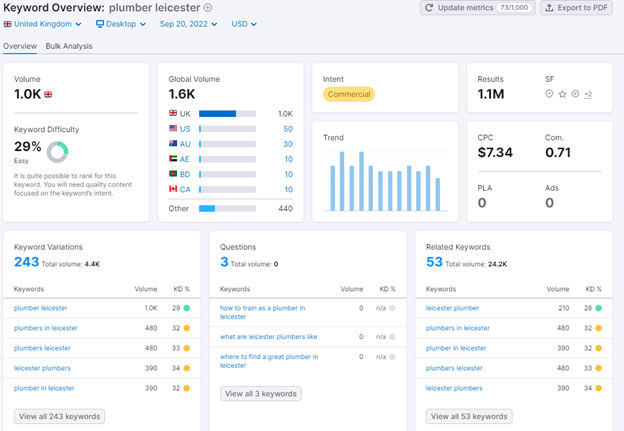
Depending on your ranking, your site will only be viewed by a small percentage of those searches. You’ll get more visitors if you rank higher on the first page.
In fact, we know that the number one position in Google gains about 805 visitors, which is 80% of the traffic via “plumber Leicester”.
Using SEO tools like SEMrush, we can show you what a ranking of 10 would look like compared to a ranking of 1.
Position 10 receives about 7.3% of search traffic. The number of visitors is 75 out of 1,000.

You can expect about 805 visitors if you are in position 1, which translates to 80% of the search traffic. Rank higher, and you’ll earn over 10x more.
Since most visitors won’t contact you, let’s assume that 5% of visitors become leads in both ranking positions. In position 10, you have 3.75 leads, which I’ll round up to 4. You would have 40 leads if you were in position 1.
Obviously, not every lead will turn into a paying customer. Let’s assume only 25% of those leads become actual customers. You have one new customer in position 10 and 10 paying customers in position one.
Let’s say the average customer value for a plumbing job in Leicester is £500.
(1000) x (.80) x (.05) x (.25) x (500) = L = £5,000/month
Let’s say you’re investing £500/month on local SEO services, so at the #1 position, you’re left with £4,500 in profit. That means your final ROI calculation would be £4,500/£500, or an ROI of £9. For every pound you spend on SEO, you’re earning £9 in the number one position. These numbers are entirely arbitrary, but if we continue with the example, it’s easy to see we’d lose money at position 10.
(1000) x (.07) x (.05) x (.25) x (500) = L = £438/month
The ROI calculation for the #10 position is 62/500, or 10p profit for every £1 spent on local SEO.
You’d have to increase the average customer value to make it worthwhile. Increasing rankings quickly would be more difficult if you spent less.
A return on investment can take many forms. The effectiveness of local SEO can be demonstrated by looking at more than one metric.
Any successful local SEO campaign includes claiming a location’s Google Business Profile (GBP) listing (formally Google My Business GMB).
“Insights” in the Google Business Profile dashboard provde a wide range of metrics for tracking Google impressions.
Increasing phone calls, driving directions, and website visits should be shown to clients as proof of value. For historical trend tracking, copy the data to a spreadsheet or use a Google Business Profile reporting service. Google My Business only keeps data for 90 days.
Here at Dynamics Tech, we have some tools which can go past 90 days, which is excellent for deep dive analysis.
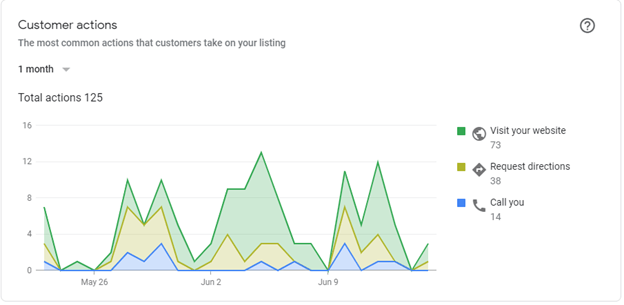
Higher-ranked listings receive a larger share of search traffic, as mentioned above. Reporting rank changes is easy, and business owners love seeing their listings rise.
Using Google Maps, you can see rankings based on your proximity. Would it be helpful to know the ranking of a listing across the entire city?
Again, another way to see the progress of your local SEO is through your local rankings. The Geo Grid reporting service is a great way to see this happening weekly or monthly.

Other metrics that can be measured for your Google Business Profile health and ROI
Local Authority
What is local authority? Moz.org uses a similar algorithm to predict search engine ranking at the national level, called Domain Authority (DA). The local Authority (LA) assesses and predicts performance in local search results. Using your brand, listing, brand reputation, engagement, and influence rating. Total LA scores range from 1 to 100, where 100 is the highest predicted ranking results.
Brands Health
Shows the importance of consistent photos and posts. Total photos + total posts, weighted for time, over the last 90 days. Adding one new photo and one new post every 7 days will achieve a score of 100.
Influence Health
A good photo and a good post demonstrate the importance of quality. Divide the total number of photo views and posts views from the past 90 days by GBP’s “total searches” metric. To achieve a score of 100, at least 1 photo or post must be viewed for every search view.
Listing Health
Ensures GBP listings are complete and accurate. Examines 11 fields in GBP, including Name, Address, Phone, and more. ^A score of 100 will be achieved if the info tab of GBP contains no missing fields.
Reputation Health
Reviews with high ratings are significant, as demonstrated by this example. Over the past 12 months, the number of reviews rated 4 or 5 stars has consistently increased. Obtaining a score of 100 requires one 5-Star review every 30 days for 12 months.
Engagement Health
Shows the importance of responding promptly to all reviews. Weighted by the response time, the number of review responses was divided by the number of reviews in the past 90 days. If you respond to all customer feedback reviews within 72 hours, you will receive a score of 100.
Here at Dynamics Tech, we provide local SEO reports on the above metrics, and then provide additional information to clients on how they can improve their local business health:
Increase Buying Actions
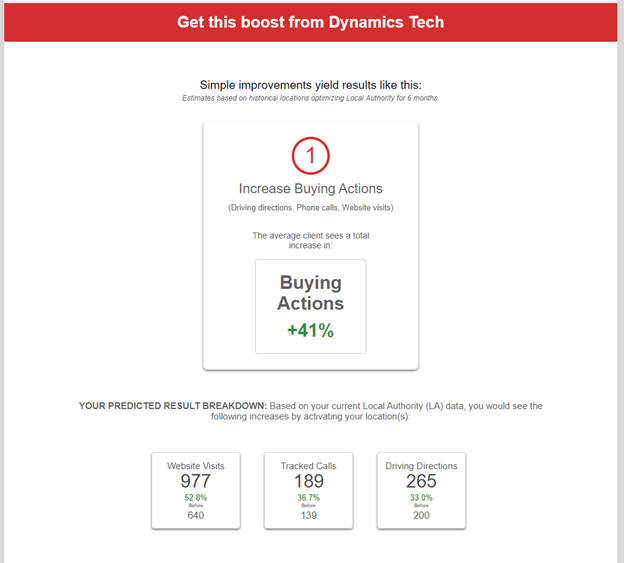
Influence Potential Buyers
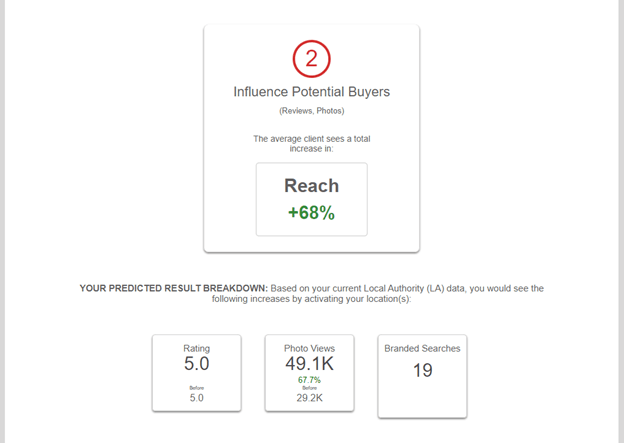
Local Presence

Call Tracking
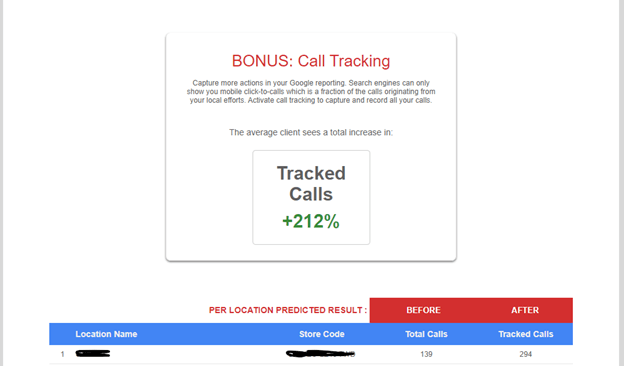
Photo SMS Text Messaging and Database Building
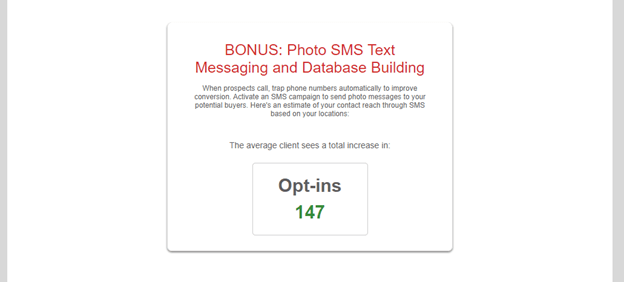
4. Content Marketing
Education is more effective than selling content marketing to influence buying behaviour. This approach attracts and converts prospects during their online searches using content.
Your content needs to focus on the pain points and needs of specific buyer personas, leads, and/or stages of the buyer’s journey to attract those most likely to purchase your product or service.
Tailored content includes infographics, pillar pages, podcasts, blogs, white papers, webinars, landing pages, eBooks, and podcasts. Video currently dominates B2B content marketing. The growing engagement value of short-form, animated, and explainer videos is well worth the investment for nearly 70% of B2B marketers.
Inbound marketing is not the same as content marketing (more on below). Due to its focus on content that drives action, content marketing strategy is an imperative component of an inbound growth strategy. Contrary to inbound marketing, this approach does not integrate other marketing methodologies to create experiences that build and strengthen business-buyer relationships.
The following 3 reasons are why content marketing is effective:
- Promotes sales funnel conversion by attracting prospects
- Enhances brand visibility, credibility, trust, and desirability
- Ensures relevant content, target markets, and key decision makers are aligned
82% of companies actively use content marketing, according to Hubspot’s State of Marketing Report. Additionally, about 26% of businesses’ marketing budgets are allocated to content creation. Even so, not everyone understands how to calculate the ROI of content marketing. According to 54% of companies, measuring content marketing ROI is moderately complex, and only 43% even attempt to do so.
Getting a good ROI from content marketing takes time, which is one of the reasons it’s hard to measure.
The rewards of your labour may not always be apparent immediately, but that does not mean they won’t come. Knowing your key performance indicators (KPIs) is crucial to understanding how well your campaign is doing.
Follow up on each piece of content you produce by analysing how it impacts these metrics. Understanding your target audience is also essential.
You can boost your marketing efforts by understanding what they like and how to effectively attract them to your brand.
As before, the ROI formula for content marketing is the same as all other ROIs. Your return – your investment, divided by the investment x 100, gives you an ROI percentage.
You can do this per campaign or track monthly and quarterly.
For example, let’s say your content marketing campaign has generated £10,000 in sales since its launch, and you spent £2000 on it.
The calculation would look like this:
ROI = (10,000 – 2000) / 2000 x 100
ROI = (8000) / 2000 x 100
ROI = 4 x 100
ROI = 400%
In other words, your marketing investment of £2000 returned 400%.
To measure ROI for content marketing, you can set goals for your content campaign. Measure the traffic generated. Measure the number of leads you have directly gained from that campaign. Track customer inquiries to sales.
Here are five ROI statistics for content marketing:
- According to DemandJump, the most successful B2B companies spend nearly 40% of their marketing budget on content marketing.
- Before making a purchase, consumers engage with an average of 11.4 pieces of content. (Source: ly)
- The ROI of SEO marketing is 22:1 (or 2,200%) (Source: Marion)
- According to Marion, email marketing has an average ROI of 42:1 (or 4,200%).
- The likelihood of marketers driving positive ROI is 13x higher when they prioritise blogging (Source: Content Writing Jobs)
Hopefully, that will help you decide when to invest in your marketing budget.
5. Email Marketing
Email marketing is also a practical way to convert online visitors into actual customers. Email marketing will help nurture relationships with your existing customers by sending them helpful information and offers they can take advantage of.
The goal is to make your audience aware and build trust to know they can depend on you as their reliable source for your products and services.
Building your email list is an excellent investment of your time if you focus on providing helpful information and discounts to your loyal customers.
According to research, email marketing users earn $36 for every $1 spent. The average ROI on email marketing was 37:1, or 3700%, according to a Litmus survey of 372 marketers. Litmus also found that brands who describe their email marketing campaigns as “successful” received 42:1.
Among SMBs, 81% use email as their primary customer acquisition channel. With 62%, organic search was the next most popular choice.
You can increase your ROI by QA, A/B, and spam testing your marketing emails. Add testing to work for your email marketing tool, and earn up to 28% more. The Litmus 2022 study.
Once you start tracking email marketing ROI, you’ll enjoy the following benefits:
Improved Brand Awareness
Does your target audience recognise your brand identity? The best way to build relationships with leads and customers is through email marketing-but only if they read it. You can determine the effectiveness of your campaigns by tracking their ROI.
Increase website traffic
A strong email marketing strategy is a fantastic way to increase website traffic. The question is, how do you get your subscribers to visit your site and click on links? By studying your ROI, you determine what motivates them to respond to your emails.
Increased Revenue
Email marketing ROI measures the value you receive for the money and time you spend on campaigns. Your ROI can be improved when you know what it is, leading to higher revenue.
6. Paid Search Marketing
Paid search marketing is pricey, but it is a good investment if you can afford to pay. The truth is that even if you have a negative ROI, paid search marketing techniques can still be worthwhile.
The reason is that paid search results are accurate. You can easily set up a paid search campaign and see outcomes in a few days.
The paid search might not work for a business in the earlier stages. However, it’s a good option if you’re looking for a competitive edge to drive more sales and help build your brand as an industry leader.
Finally, you need to measure your results. You can’t assume your marketing is effective because you’re getting more traffic or sales. You need to track your progress and see how effective your marketing is so that you can make changes if necessary.
If you follow these tips, you’ll be well on finding the best marketing strategies.
Remember to target the right audience, focus on simplicity, be consistent, and track your results. You can ensure your marketing is as effective as possible with little effort.
Generally speaking, paid advertisements have a 200% ROI, and display remarketing campaigns can boost conversion rates beyond 40% by combining similar audiences. You can only imagine how businesses performing better than the average are doing.
To maximise the effectiveness of PPC campaigns, websites should be fast and functional on both desktops and mobile devices.
That said, only a clown wouldn’t spend money on online ads…

Oh, wait. Actually, clowns spend money on ads!
Now, who’s the clown?
How do you make your marketing scalable?
If you want to grow your business, it’s essential to focus on scalable strategies. So, what does it mean for a marketing strategy to be scalable?
These strategies can quickly expand to reach more people as your business grows.
Here are a few scalable marketing strategy examples:
Content Marketing
Creating and distributing high-quality content is one of the most effective and
Scalable marketing strategies are out there. Not only is it relatively cheap and easy to produce content, but it can also be repurposed and used in various ways. For example, you can use blog posts as the basis for social media posts, e-books, and infographics.
SEO
Optimising your website for search engines is another excellent way to reach more potential customers. And best of all, once you’ve achieved a high ranking, it requires very little ongoing maintenance.
Local SEO
To scale your local reach, create location pages for all your services and the city/town where these services or products are offered.
Examples: “web design Leicester“, “Digital Marketing Agency Leicester“, “Digital Marketing Agency Rutland“, “Digital Marketing Leicestershire” and so forth… Create content about local areas, for example: Bradgate Park.
Focus on your Google Business Profile, post more pictures and gain more reviews than your local competitors.
Social Media
Platforms like Facebook, Twitter, and Instagram are practical marketing tools. Not only do they allow you to reach a large audience with your message, but they also allow you to interact directly with potential customers.
Paid Advertising
While paid advertising can be expensive, it can also be highly effective if done correctly. You can target your ads with paid advertising to specific demographics, interests, and locations. There are plenty of other marketing strategies that are scalable. The key is to focus on those that will allow you to reach the most people with the least effort. Concentrating on scalable marketing strategies can take your business to the next level without breaking the bank.
Other metrics & KPIs to measure
Marketers often mistake putting ROI at the top of their priority list and developing tunnel vision. Maximising ROI isn’t a viable marketing objective; it takes your focus away from what matters: profit.
It is possible to estimate the profitability of marketing initiatives with a return on investment, but it is not the end goal. ROI should be used alongside other crucial performance indicators to build a rounded picture of your marketing profitability.
These include:
- A company’s gross profit, operating profit, and net profit are calculated.
- There are three levels of profit calculation: gross profit margin, operating profit margin, and net profit margin.
- Expenses associated with operating your marketing strategies.
- In your niche, your target market share is the percentage of your revenue from the total revenue generated.
- The growth rate in revenue over a period, such as a month, quarter, or year.
- Your average cost per acquisition is the amount you spend to acquire each customer.
- Your business’s value to each customer throughout their lifetime.
- Continually purchasing from you is known as customer retention.
- Customer churn rate: How many customers stop buying from you over time?
- ROI alone cannot give you a reliable measure of marketing or business performance. If you don’t have the budget to achieve your target return, it doesn’t matter how great your calculated ROI is.
By incorporating ROI with other important KPIs, you can build a more accurate picture of marketing (and business) performance. This allows for more accurate predictions and informed marketing decisions throughout the customer journey.
Conclusion
Each marketing exercise brings specific results. You should choose the marketing tactic that is the most beneficial for your business and can guarantee significant ROI.
Set goals, and have the formula to measure your ROI. That way, too, you can see how well you are doing and reinvest in what works for big ROIs for your small business.
Are you looking for a digital marketing agency for small businesses in the UK? Dynamics Tech helps start-ups and small companies manage many aspects of their brand, such as increasing sales, strategising marketing campaigns, and selecting the most successful technology. Contact us today!

